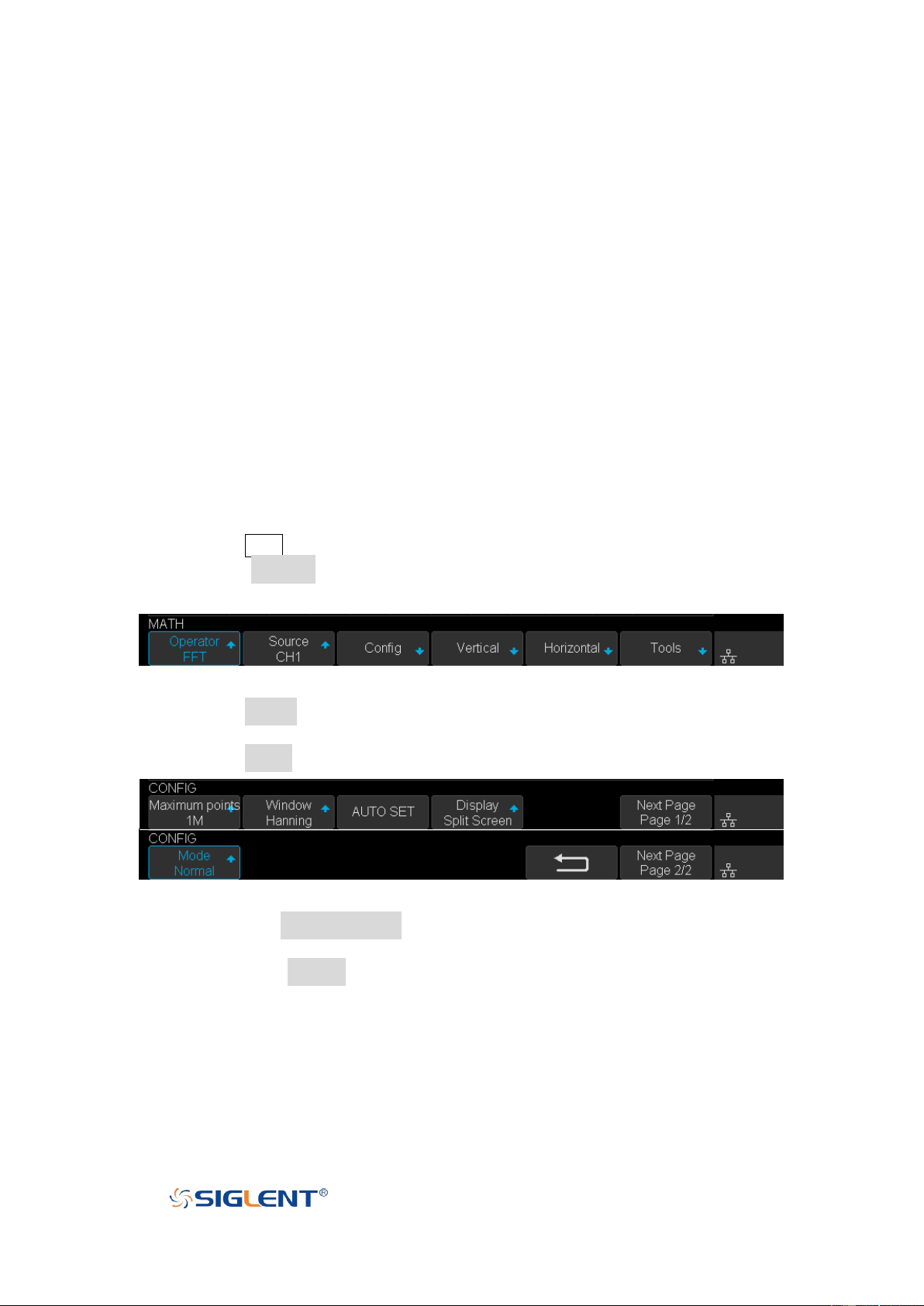Loading ...
Loading ...
Loading ...

SDS1000X-E User Manual
119
WWW.SIGLENT.COM
FFT Operation
FFT is used to compute the fast Fourier transform using analog input channels. FFT takes
the digitized time record of the specified source and transforms it to the frequency domain.
When the FFT function is selected, the FFT spectrum is plotted on the oscilloscope
display as magnitude in dBV versus frequency. The readout for the horizontal axis
changes from time to frequency (Hertz) and the vertical readout changes from V to dB.
FFT operation can facilitate the following works:
Measure harmonic components and distortion in the device under test
Measure the characteristics of the noise in DC power
Analyze vibration
To display a FFT waveform:
1. Press the
Math
button on the front panel to open the MATH function menu.
2. Press the
Operator
softkey and then turn the
Universal Knob
to select
FFT
. The
resulting math waveform is displayed in white and labeled with “M”.
Figure 70 FFT Menu
3. Press the
Source
softkey, and then turn the
Universal Knob
to select the source to do
FFT operation. Analog channels can be used as the source.
4. Press the
Config
softkey to enter CONFIG menu.
Figure 71 FFT CONFIG Menu
Press the
Maximum points
softkey, and then turn the
Universal Knob
to select
the Maximum points.
Press the
Window
softkey, and then turn the
Universal Knob
to select an
appropriate window.
Spectral leakage can be considerably decreased when a window function is
used. The oscilloscope provides five windows (Rectangle, Blackman, Hanning,
Hamming and Flattop) which have different characteristics and are applicable to
measure different waveforms. You need to select the window function according
to different waveforms and their characteristics. Please read the table below
Loading ...
Loading ...
Loading ...